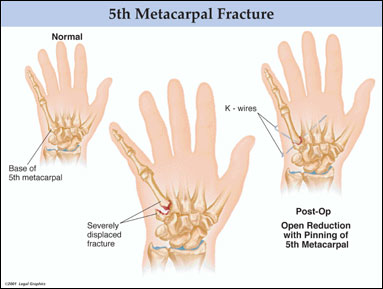If you or someone you love has suffered a serious personal injury in a motor vehicle accident, you may feel overwhelmed by the many medical issues associated with the care and treatment of the injury. Serious personal injuries often require the assistance of a variety of medical personnel ranging from general practice medical doctors to specialists like surgeons or physiatrists. You may also need the assistance of medical providers like physical therapists, chiropractors and/or mental health professionals like psychologists.
We know that dealing with the various medical and rehabilitative professionals caring for you can be confusing. At the Blackman Legal Group we help our clients understand their medical options and achieve the best possible medical outcome through continuity and coordination of their medical care.
We have provided a glossary below to help you sort out the area of expertise and type of services you can expect from each. For help in finding an appropriate medical or rehabilitative care professional in a specific area, contact us.
CAT scan
CAT scan is short for computed axial tomography scan. A CAT scan is similar to an x-ray except that it makes a full three-dimensional computer model of your insides.
Chiropractor
A Chiropractor is a physician who looks to the physiological and biochemical aspects of the patient, including structural, spinal, musculoskeletal, neurological, vascular, emotional and environmental relationships. Treatments you can expect to receive from a Chiropractor include adjustment and manipulation of the articulations and adjacent tissues of the human body especially the spinal column.
EEG
EEG is short for electroencephalography. This type of reading is usually taken by electrodes pasted to the scalp with an electricity conducting gel. The electric signals sent by your brain are amplified and recorded by a galvanometer. The resultant wavy lines provide information on your brain’s activity that is used by your doctors in diagnosing and treating you.
Emergency Room Physician
An emergency room (ER) physician is probably the first physician you will see if you have been seriously injured in a motor vehicle accident. The ER physician will order a range of tests based upon your condition when you arrive and provide a differential diagnosis based upon the results of those tests, your medical history, and his/her examination of you.
EMG/ NCV
EMG is short for electromyography; NCV is short for nerve conduction velocity. An EMG is an electrical testing of nerves and muscles. This type of test is often looking for a pinched nerve that is causing tingling or numbness, or muscle fatigue resulting from nerve or muscle disease. It is a test performed by a specialist (an electromyographer) who is usually a neurologist or physiatrist, although parts of the test may be performed by a technician. There is a portion of the test in which fine needles are inserted into your muscles to see if there has been any damage as a result of a nerve problem or if you have a disease that involves the muscle rather than the nerve.
MRI
MRI is short for Magnetic Resonance Imaging. It is the method of choice for the diagnosis of many types of injuries and conditions. It can be used to view tissues and flowing blood. Unlike an x-ray or CAT scan that uses ionizing radiation to produce a picture, an MRI uses magnetic resonance produced by a radio frequency to make a three-dimensional picture of your body.
Neurologist
A neurologist is a medical doctor or osteopath who has trained in the diagnosis and treatment of nervous system disorders, including diseases of the brain, spinal cord, nerves and muscles.
Neurosurgeon
Neurosurgery is the medical specialty concerned with the diagnosis and treatment of the entire nervous system, including the brain, spinal cord, spinal column, and nerves that travel through all parts of the body.
Occupational Therapist
Occupational Therapy is skilled treatment that helps you achieve independence. The occupational therapist designs a program for you with the goal of improving your ability to perform daily tasks. The program, which may include training in the use of adaptive equipment, is generally designed after comprehensive home and job site evaluations and performance skill assessments.
Orthopedic Surgeon - Orthopedics
(orthopaedics) is the medical specialty devoted to the diagnosis, treatment, rehabilitation, and prevention of injuries and diseases of your body’s musculoskeletal system (including bones, joints, ligaments, tendons, muscles, and nerves). Your treatment might include medical counseling, medications, casts, splints, and therapies such as exercise, or surgery.

This medical illustration was created for use during the jury trial of a motor vehicle accident in which our client suffered a broken hand that required surgical repair. The illustration was professionally prepared from the medical records, x-rays, and after consultation with the surgeon. These types of trial illustrations make it very easy for the jury to understand the severity of the injury (fracture) and the invasive nature of the surgery that was required to correct the problem. Medical illustration created by Gale Heilman of Legal Graphics.
Osteopath
An Osteopath is a Doctor who has had training similar to that of an M.D. The philosophy of Osteopaths differs from that of an M.D. in that osteopaths believe in the body’s innate ability to heal itself. Thus the osteopath will consider the “whole patient” rather than the symptoms. A Doctor of Osteopathy can prescribe drugs, perform surgery, and use all scientifically accepted methods to treat their patients.
Physiatrist
A physiatrist is a physician specializing in physical medicine and rehabilitation. Physiatrists treat acute and chronic pain and musculoskeletal disorders.
Physical Therapist
A Physical Therapist provides services to help restore function, improve mobility, relieve pain and prevent or limit permanent physical disabilities. A physical therapist also works to restore, maintain and promote overall fitness and health. When you see a physical therapist you can expect to have your medical history, strength, range of motion, balance, coordination, posture, muscle performance, respiration, and motor function examined. Treatment will often include exercise, electrical stimulation, hot packs, cold compresses, ultrasound, traction, and/or deep-tissue massage. The therapist will also teach patients to use devices such as crutches, prostheses, and wheelchairs.
Primary Care Physician
Some health insurance plans require members to select and seek treatment from a physician who provides treatment and/or referrals to appropriate specialists. This physician, the primary care physician, is usually an internist or family practice physician.
Psychiatrist
A psychiatrist is a physician who is trained to prescribe medicine and provide counseling to help people deal with psychological and emotional issues.
Conclusion
If you have any other questions regarding the care and treatment of your injury, or if you need help in finding an appropriate medical or rehabilitative care professional in a specific area, please contact us. The Blackman Legal Group has provided advice and assistance to thousands of people who have suffered personal injuries. We believe that helping you make the best possible physical recovery from your injury is one of the most important services we can provide. Contact Us Today!
- San Francisco Office
1 Embarcadero Center
Suite 500
San Francisco, CA 94111
Phone: 415-585-5200
Toll Free: 866-692-8126
Map & DirectionsRedwood City Office
2317 Broadway St.
Suite 1
Redwood City, CA 94063
Phone: 650-366-5800
Toll Free: 866-692-8126
Map & DirectionsOakland Office
1300 Clay Street
Suite 600
Oakland, CA 94612
Phone: 510-585-6246
Toll Free: 866-692-8126
Map & Directions





